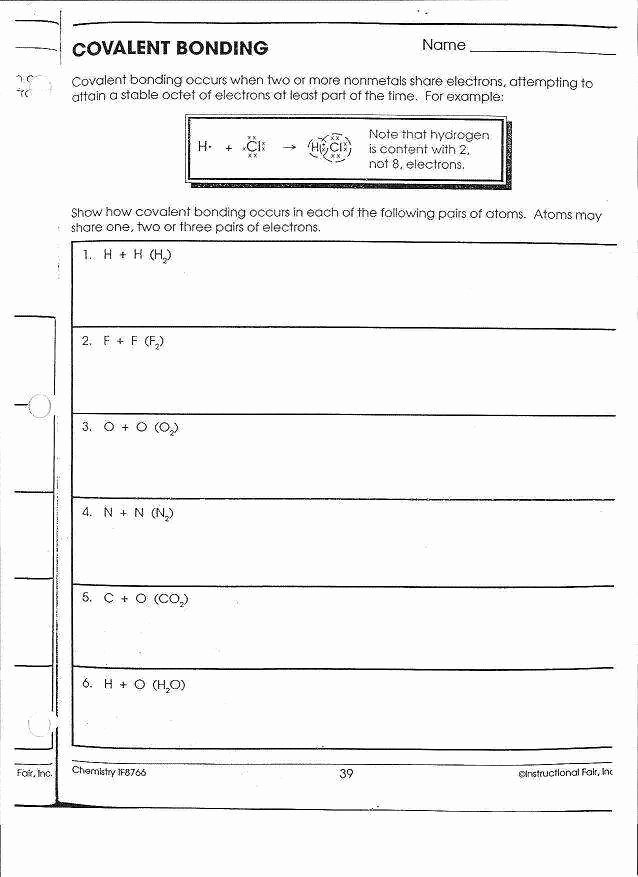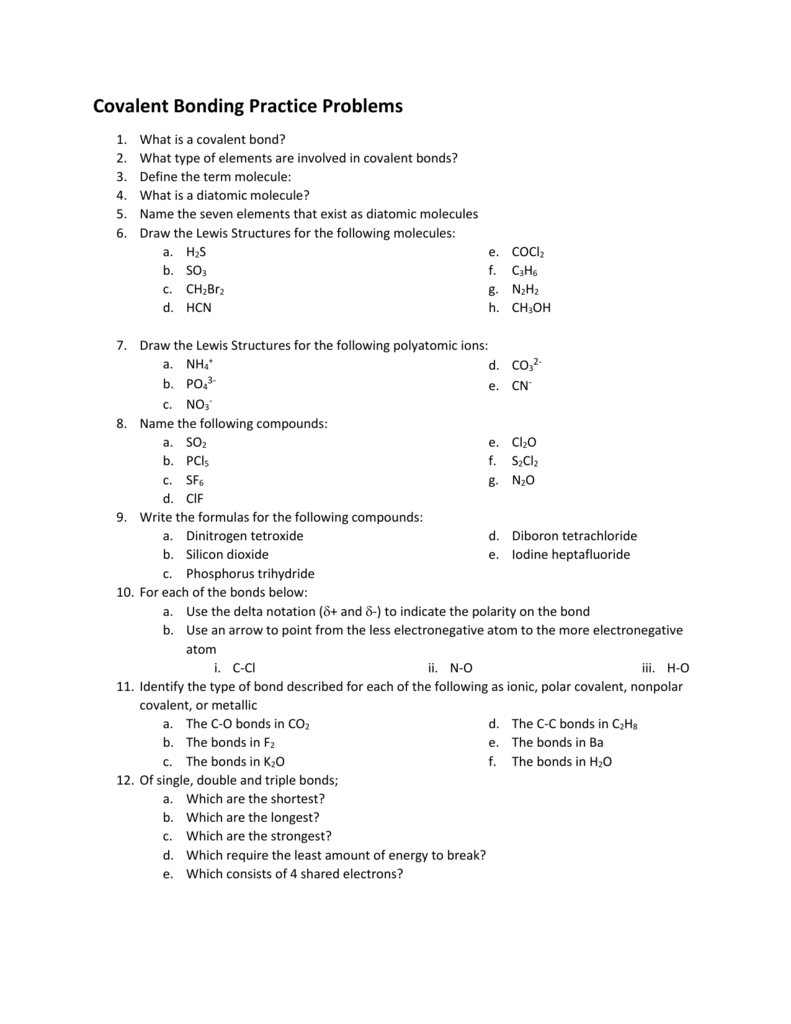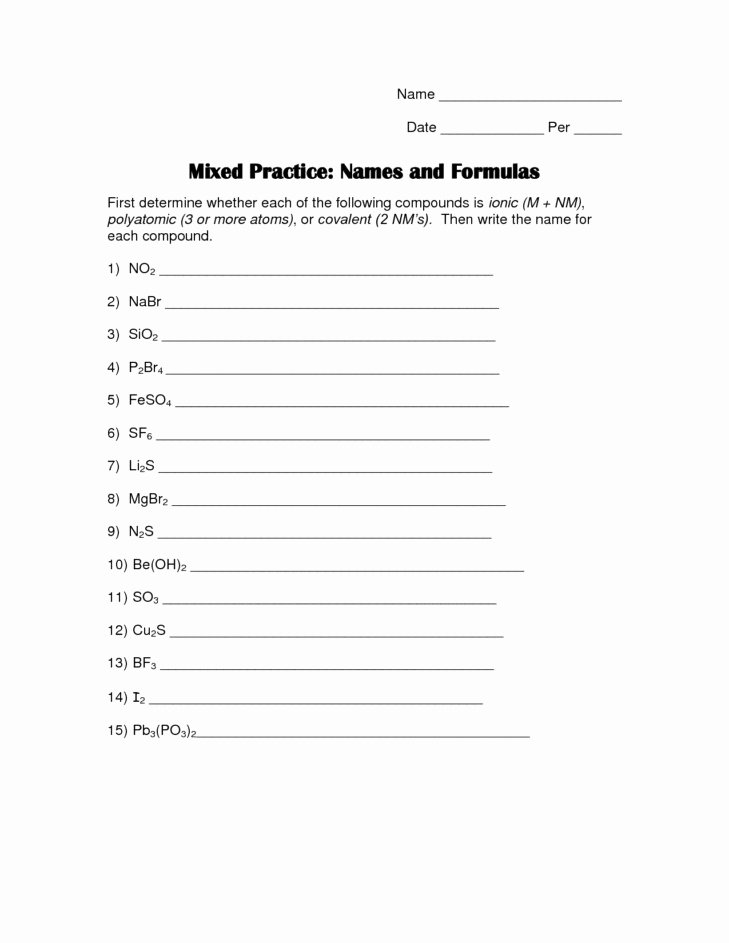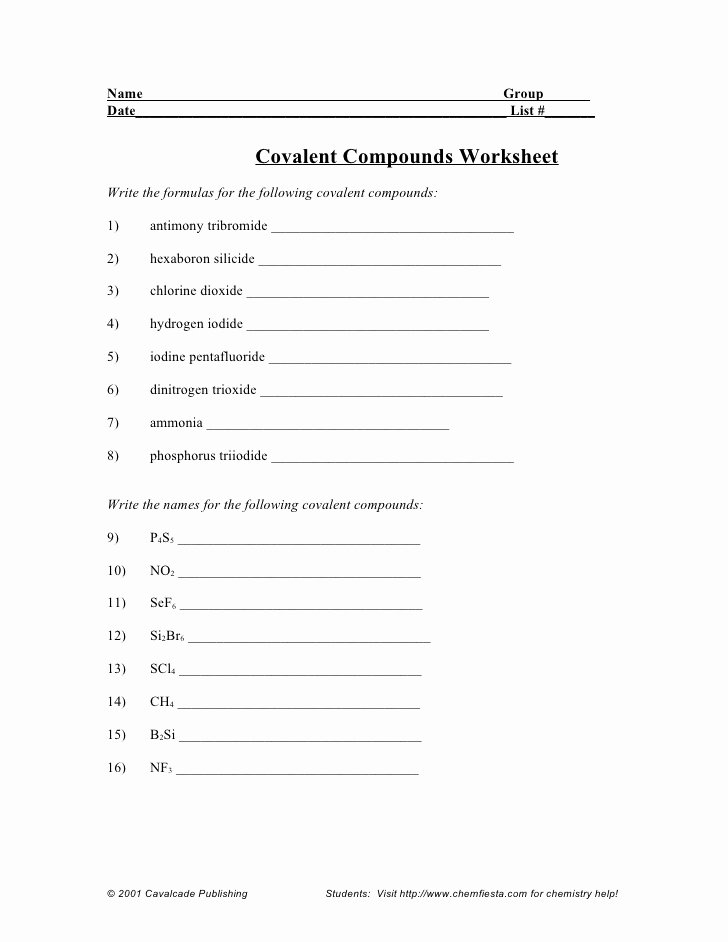Worksheet On Covalent Bonding With Answers Chapters 6 and 7 Practice Worksheet Covalent Bonds and Molecular Structure How are ionic bonds and covalent bonds different Describe the relationship between the length of a bond and the strength of that bond Identify the type s of bond s found in the following molecules CCl4
Model 2 Covalent bonding The interaction between two non metals is covalent Two or more non metals form covalent bonds In a covalent bond two atoms share their electrons in order for each to gain a noble gas configuration For most of the atoms you come across this will mean having 8 electrons in the valence shell the octet rule Covalent Bonds Draw the Lewis structures for each atom draw circles to show the electrons that are shared and then write the bond structure and chemical formula C 2 Hydrogen 1 Sulfur
Worksheet On Covalent Bonding With Answers

Worksheet On Covalent Bonding With Answers
https://chessmuseum.org/wp-content/uploads/2019/10/covalent-bonding-worksheet-answer-key-lovely-covalent-bonding-worksheet-answers-of-covalent-bonding-worksheet-answer-key.jpg

Chapter 8 Covalent Bonding Worksheet Answers Worksheet
https://i.pinimg.com/originals/b5/42/7e/b5427e79aba86192173f2e6904f888b5.jpg

Covalent Bonding Worksheet Answers
https://s3.studylib.net/store/data/009173430_1-5a6e1e95978b3ad75e0477d94dd4073b.png
1 How are ionic bonds and covalent bonds different Ionic bonds result from the transfer of electrons from one atom to another Covalent bonds result from two atoms sharing electrons 2 Describe the relationship between the length of a bond and the strength of that bond Mar 13 2023 nbsp 0183 32 Learning Objectives Be able to define covalent bonds polar covalent bonds ionic bonds electronegativity dipoles formal charge molecular formula structural formula and electron dot formula Be able to recognize whether the type of bond between two atoms is covalent polar covalent or ionic
Covalent Bond between a Non Metal and Non Metal NM NM PART 1 Determine if the elements in the following compounds are metals or non metals Describe the type of bonding that occurs in the compound Compound Element 1 metal or non metal Element 2 metal or non metal Bond Type NO 2 N non metal O non metal covalent NaCl SO 2 PI 3 Covalent Bonds Objective Identify whether a bond is being broken or formed based upon energy being absorbed or released Distinguish between the three types of bonds and Decide which type of bond is present based upon the atoms involved Classify a substance as Ionic Covalent or Metallic based upon its properties
More picture related to Worksheet On Covalent Bonding With Answers

50 Covalent Bonding Worksheet Answer Key
https://chessmuseum.org/wp-content/uploads/2019/10/covalent-bonding-worksheet-answer-key-luxury-naming-covalent-pounds-worksheet-answers-of-covalent-bonding-worksheet-answer-key.jpg

50 Covalent Bonding Worksheet Answers
https://chessmuseum.org/wp-content/uploads/2019/10/covalent-bonding-worksheet-answers-lovely-worksheet-writing-covalent-pounds-of-covalent-bonding-worksheet-answers.jpg

IGCSE Identifying Ionic Covalent Bonds Chemistry Worksheets
https://i.pinimg.com/originals/ca/b8/f5/cab8f574367db07730ac68b13af7ba2e.png
Structures and Bonding Covalent Bonding Worksheet Combined science Chemistry Key Stage 4 Mr Robbins Complete the dot and cross diagrams Put the outer shell electrons on the atoms and then complete the molecule Below is a completed example Developing understanding of covalent bonding Support learners to visualise covalent structures using a variety of different diagrams and physical models This worksheet is part of the Johnstone s triangle series of resources designed to help learners to move between different conceptual levels of thinking in key chemistry topics
When H forms a bond with H2O to form the hydronium ion H3O this bond is called a coordinate covalent bond because a both bonding electrons come from the oxygen atom b it forms an especially strong bond c the electrons are equally shared d the oxygen no longer has eight valence electrons 28 Covalent Bonding worksheets questions and revision for GCSE Combined Science and Chemistry All the revision you need in one place

Covalent Bond Practice Worksheet Answers
https://briefencounters.ca/wp-content/uploads/2018/11/covalent-bond-practice-worksheet-answers-along-with-covalent-and-ionic-bonds-worksheet-kidz-activities-of-covalent-bond-practice-worksheet-answers.jpg

Quiz Worksheet Single Covalent Bonds Study Com Bond Free Worksheets
https://www.housview.com/wp-content/uploads/2018/07/quiz_worksheet_single_covalent_bonds_study_com_bond_5.png
Worksheet On Covalent Bonding With Answers - Mar 13 2023 nbsp 0183 32 Learning Objectives Be able to define covalent bonds polar covalent bonds ionic bonds electronegativity dipoles formal charge molecular formula structural formula and electron dot formula Be able to recognize whether the type of bond between two atoms is covalent polar covalent or ionic